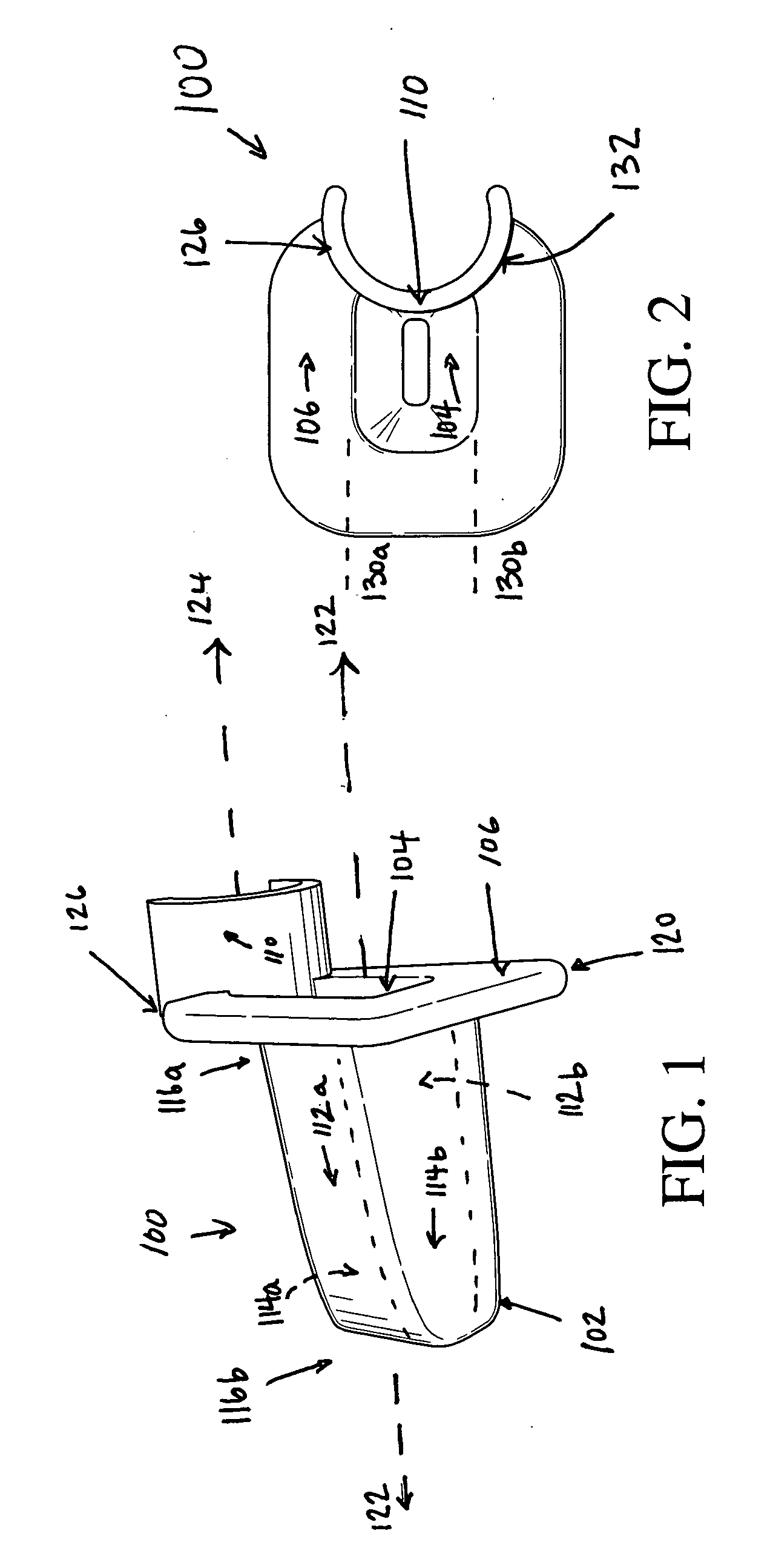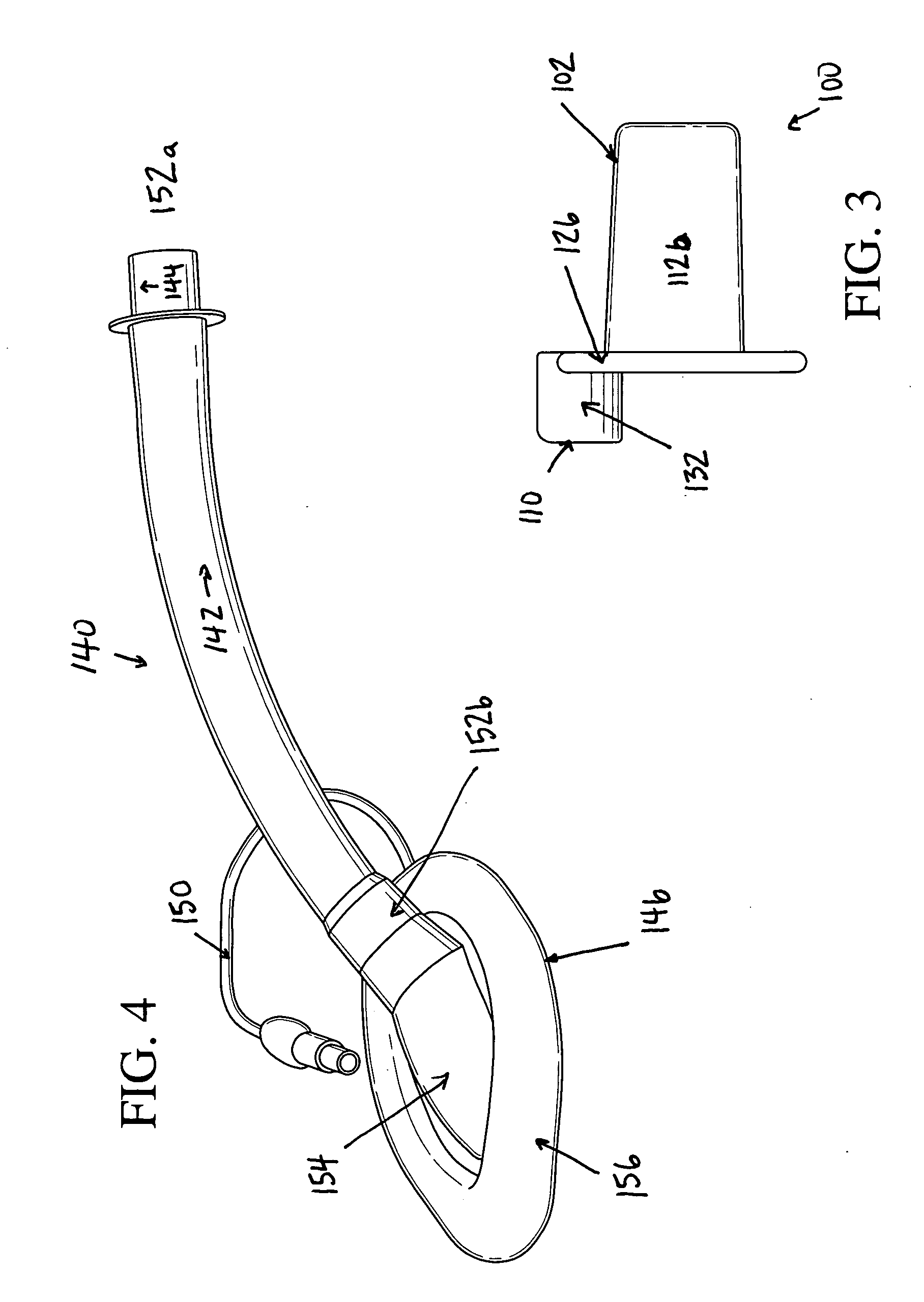Surgical tube guard
a tube guard and tube technology, applied in the field of surgical tubes, can solve the problems of unsatisfactory action, patient bite, obvious danger to the patient, etc., and achieve the effect of convenient installation and removal
- Summary
- Abstract
- Description
- Claims
- Application Information
AI Technical Summary
Benefits of technology
Problems solved by technology
Method used
Image
Examples
Embodiment Construction
[0025]FIG. 1 illustrates one embodiment of a perspective view of an LMA bite-block device 100. Generally, the device 100 is designed for partial placement within a patient's mouth so as to protect an inserted air tube, such as an LMA tube, from damage or occlusion resulting from the patient biting the tube. The device includes a bite-block body 102, a central cavity 104, a flange 106, and a tube coupling mechanism 110.
[0026] The bite-block 100 possesses a generally elongate bite-block body 102, comprising top and bottom walls 112a and 112b, side walls 114a and 114b, and a first end 116a and a second end 116b. The bite-block body 102 is preferably dimensioned such that, when inserted between the patient's molars, the patient's front teeth are separated by a distance that is greater than the width of the air tube. In the embodiment illustrated in FIG. 1, the top and bottom walls 112a and 112b are approximately ¾″ wide by 1¼″ long. The side walls extend a width, on average, of approxi...
PUM
 Login to View More
Login to View More Abstract
Description
Claims
Application Information
 Login to View More
Login to View More - R&D
- Intellectual Property
- Life Sciences
- Materials
- Tech Scout
- Unparalleled Data Quality
- Higher Quality Content
- 60% Fewer Hallucinations
Browse by: Latest US Patents, China's latest patents, Technical Efficacy Thesaurus, Application Domain, Technology Topic, Popular Technical Reports.
© 2025 PatSnap. All rights reserved.Legal|Privacy policy|Modern Slavery Act Transparency Statement|Sitemap|About US| Contact US: help@patsnap.com



